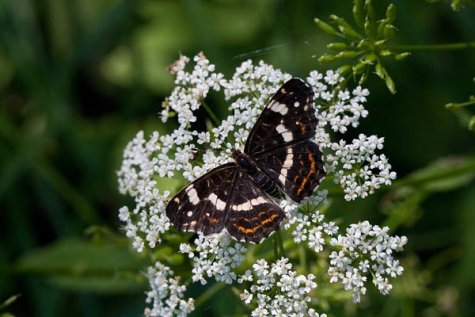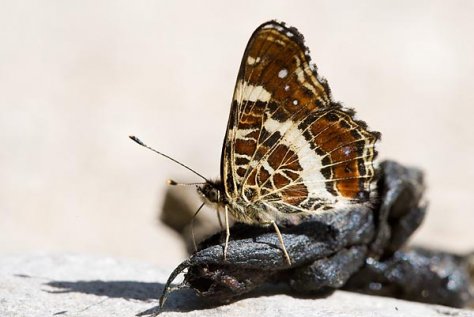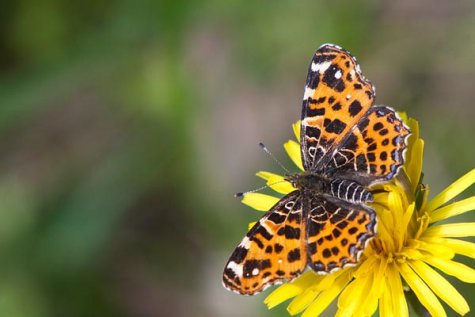Seasonal dimorphism
Photos: Arne Ader
Translation: Liis
Map butterfly – summer generation
Map butterfly, summer generation Nõgeseliblika suvise põlvkonna esindaja Araschnia levana f. porsa
Map butterfly, spring generation Nõgeseliblika kevadpõlvkond Araschnia levana f. levana
In May the spring generation, with orange-black-patterned top sides of wings (see photo at end of article), flittered about at forest verges and roads. Map butterflies spread here from the East about a century ago.
In early June the females laid their eggs on nettle leaves; from the eggs black and furry caterpillars hatched who also fed on the nettles. About a week as pupas, and by now, at the end of July, representatives of the second generation are around: they already have black-and-white-patterned top sides of wings.
When we meet individuals of a species that look different in spring and in summer the scientists call it seasonal dimorphism. By the way, earlier they were thought to belong to different species.
In addition to coloration there are some more minor differences between the generations. Maps of the autumn generation are a little larger, the wing shape is a little different and body colour has darkened together with the colour of the wings.
The wing span is about 3-4 centimetres. On the top side of the black wings there is a discontinuous or stepwise cream-coloured band, on the hind wings the band is quite wide. On the wing margins often a narrow, discontinuous orange band can be seen; wing fringes patterned in black and white.
Map butterfly
From Arne’s photo everyone can describe the underside of the wings.
The black-patterned summer generation can be mistaken for admirals (Limenitis) as well as emperors (Apartura) but they are much larger than the maps. Noting the underside of wings prevents any mistake.
Maps winter as pupa, not imagos.
Map butterfly – spring generation











